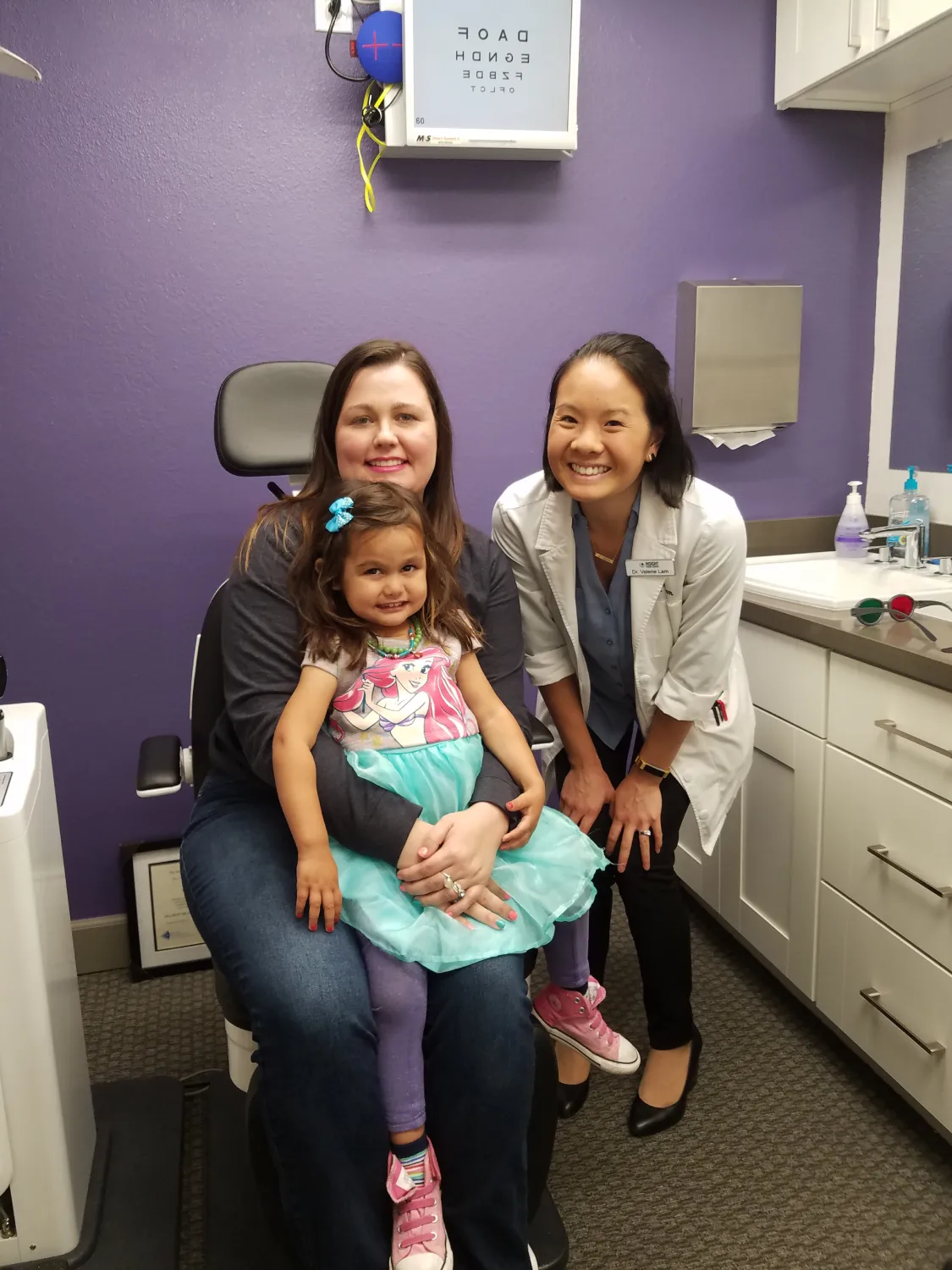It’s not uncommon for parents to feel a bit anxious when they notice their child’s vision getting worse year after year. You might find yourself wondering, “Is this normal? “Should I be worried?” The truth is, changes in your child’s prescription during childhood is normal in childhood myopia, yet that does not mean that you should not be concerned, since the higher the myopia the increased risk of eye disease later in life. Myopia management or myopia control, is the specialty in eye care that aims to slow down or stop the increase of myopia in kids, not only to improve visual clarity or reduce the need for lenses, but also to prevent serious eye disease that can threaten vision later in life.
The Highest Rated Specialty Eye Care Center In Orange County

What Our Patients are Saying
“Insight Vision Center has been the absolute best! My 5 y/o son has severe myopia and we were fortunate to have been referred to this center for myopia management. My son receives both atropine drop and Ortho-K treatment. He no longer needs glasses during the day and it has truly changed his life. He can participate in many physical activities, such as Taekwondo sparring, that he was unable to do previously. He is so much more confident and happy now! It is truly amazing to be treated by Dr.Chen…my son loves her and looks forward to his appointments! The staff at Insight are all knowledgeable, kind, genuine, and fantastic! Insight Vision truly cares and it shows!”
⭐⭐⭐⭐⭐
“For any of you parents out there who have kids with myopia/nearsighted vision and wear glasses…this is for you! We found @insightvisionoc and are AH-MAZED at their Ortho-k night time contacts they offer to not only correct but prevent our kids eyes from getting worse! Willow has been wearing the night time contacts for 3 nights and during the day doesn’t need anything…and has 20/20 vision!!!! It’s pretty crazy. Please help your kids eyes and check them out…looking at these beautiful blue eyes again without glasses really is worth it.“
⭐⭐⭐⭐⭐
Nick H.
What Is Myopia, and How Does It Develop?
Defining Myopia
Myopia or nearsightedness is a refractive error where light entering the eye is focused in front of the retina, which results in blurred distance vision while near vision remains clear. In an eye with myopia, the image is not properly focused on the retina because the eyeball is too long or has a corneal curvature that is too steep. This reason is why we note myopic prescriptions with a negative diopter value, typically progressing between –.5 and -1.00 every year.
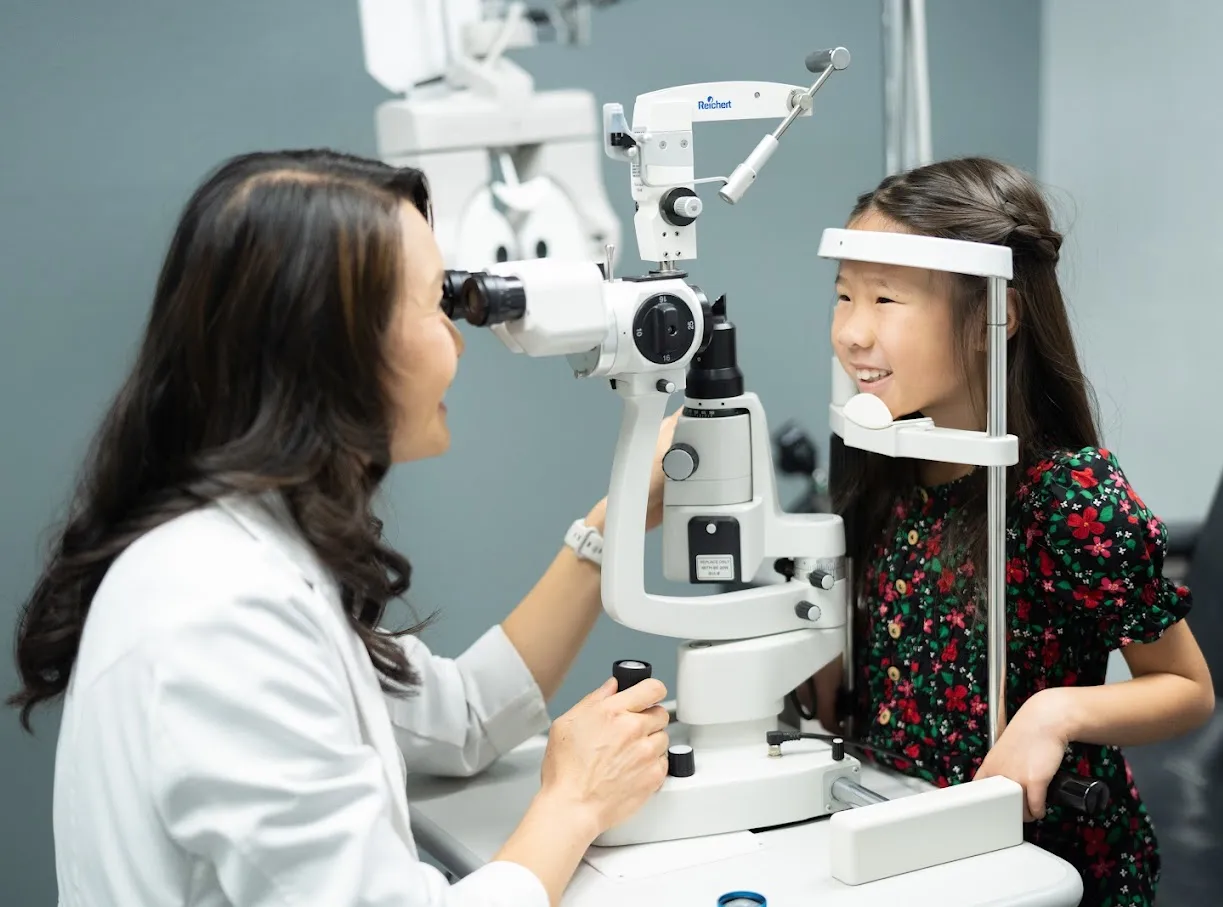
Axial Elongation and Its Role
The elongation of the eyeball, referred to as axial length elongation, is a principal contributing factor to myopia progression. As children grow, their eyes may also grow longer from front to back, which can lead to a greater degree of myopia. This process is significant because the longer the eyeball becomes, the higher the likelihood of future eye health issues. Understanding this growth pattern helps our eye doctors design precise management strategies that slow down the progression and protect your child’s vision.
How Myopic Progression Unfolds Over Time
Typically, myopia starts developing during childhood, often between the ages of 5 and 14, and can continue to progress into early adulthood. The early years are marked by rapid growth in the eye, which can lead to quick changes in the strength of your child’s prescription. Younger children may experience faster progression, which gradually slows as they approach their teenage years. Annual progression gets worse on average by -0.50 diopters to -1.00 diopters, although various factors can impact the actual progression of your child.
Causes and Contributing Factors to Myopia Progression
Genetics
Both genetic predisposition and environmental factors contribute to the development and progression of myopia. If one or both parents are nearsighted, their child is at an increased risk.
Screen Time and Near Work
Extended periods of focus on screens or near tasks are linked with increased accommodative strain—that is, the effort required to focus on close objects. The close proximity often demanded by mobile devices and computers forces the eyes to work harder, is thought to be a contributing factor to myopia progression. This theory has support from specific populations with extremely high rates of myopia, such as ultra-orthodox Jews, where young children spend most of the day reading small texts.

Outdoor Activity and Exposure to Natural Light
A decrease in the time spent outdoors has been associated with a higher risk of developing and worsening myopia. Natural sunlight prompts a natural narrowing of the pupil, which can minimize peripheral blur—a phenomenon believed to mediate the growth of the eye. Encouraging more outdoor play can be a simple yet effective step in managing nearsightedness in young eyes. Studies indicate that 2 hours a day of outdoor time can have a major impact on the progression of a child’s myopia.
Sleep and Other Lifestyle Habits
Another factor that should not be overlooked is the amount and quality of sleep a child receives. Research indicates that a regular sleep schedule, with adequate rest and an early bedtime, can have a positive impact on visual development. These lifestyle habits, though sometimes seen as minor contributors, play an important role in the overall approach to managing myopia progression.
The Importance of Early Intervention and Regular Eye Exams
Early Detection Matters
The early years of myopia are the years with the fastest progression, which underscores the importance of detecting and starting treatment early. Early intervention with myopia management is one of the best defenses against the increasing severity of myopia. It is suggested that a child has their first comprehensive eye examination as early as 6 to 12 months old, a program sometimes referred to as InfantSEE. Following this, additional evaluations around age 3 prior to entering kindergarten, and then regular yearly check-ups, ensure that any progression is closely monitored and managed. The earlier a child’s myopia is detected and a myopia management strategy begins, the greater the impact and risk reduction.
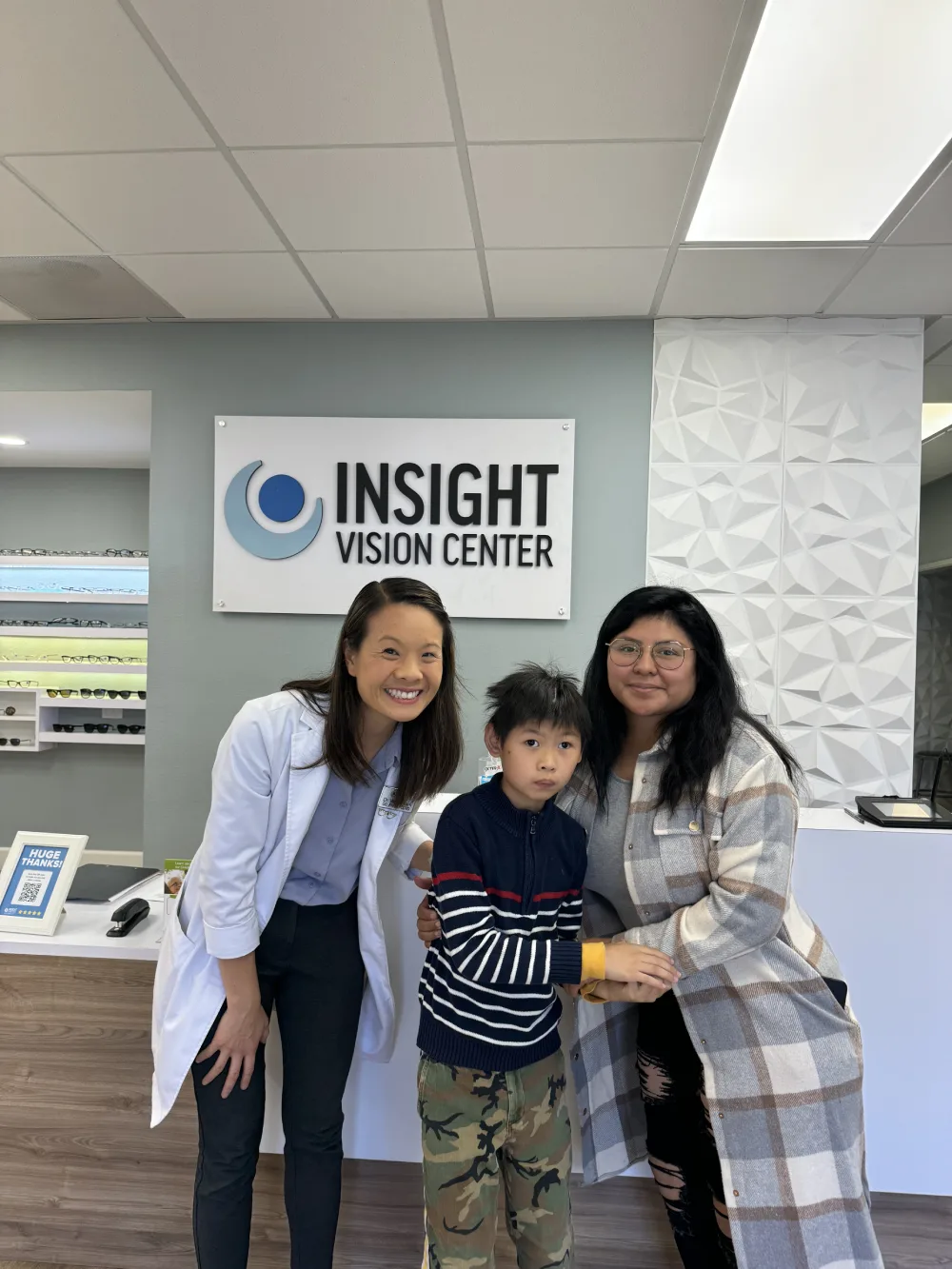
Myopia Management Techniques
Beyond traditional corrective lenses, there are several advanced strategies, known as either myopia management or myopia control, that have become the standard of care for children with myopia.
Orthokeratology (Ortho-K)
Ortho-K, also known as Orthokeratology, Corneal Reshaping Treatment (CRT), or Vision Shaping Treatment (VST), is a unique approach to managing myopia in children. These specially designed rigid, oxygen-permeable contact lenses are worn overnight, gently reshaping the cornea while your child sleeps. The lens uses a reverse-geometry design to flatten the central cornea and steepen the periphery, which not only improves central vision but also helps reduce peripheral hyperopic blur—a key factor in slowing myopia progression. Research has shown that Ortho-K is highly effective at reducing the progression of myopia and reducing axial length gain, making it a top option for myopia management.
Multifocal Contact Lenses
Multifocal contact lenses offer an effective method for managing myopia in children by altering the visual stimuli on young eyes. These lenses provide clear distance vision while also supporting good near vision, which can help slow the progression of nearsightedness. MiSight 1 day lenses from CooperVision are the first FDA-approved contact lenses specifically for myopia control in children aged 8 to 12, but other multifocal lenses with broader parameters are also available for kids with higher levels of myopia. These daily disposable lenses are comfortable, require no cleaning, and offer a convenient alternative to Ortho-K lenses.
Atropine Eye Drops
Atropine eye drops have become a well-regarded option for managing myopia progression in children. Low-dose atropine is used to relax the eye’s focusing mechanism, which can help slow the elongation of the eyeball—a key factor in worsening myopia. Unlike other treatments, atropine does not require the use of contact lenses or glasses, making it a good option for younger children or those who struggle with other myopia control methods. Studies have shown that atropine is highly effective at reducing myopia progression, and it is often used in combination with other treatments, such as multifocal contact lenses, to enhance effectiveness.
The Misconception About Standard Glasses and Contact Lenses
Standard corrective methods such as prescription eyeglasses or contact lenses are commonly used to improve blurry vision caused by myopia. While these lenses help bring distant objects into clear focus, they do not address the underlying progression of myopia. Instead, they serve to provide immediate clarity during daily activities, ranging from reading the classroom board to watching TV at home. This form of correction will still leave your child at risk, as their myopia will continue to get worse, requiring new prescriptions as they age as well as significantly increasing the risk of eye disease later in life.
Assessing the Right Option for Your Child
Each child’s eye health is unique, and there is no one-size-fits-all solution in myopia management. Our eye doctors carefully evaluate the individual factors at play by considering age, current prescription, rate of myopic progression, and lifestyle. This personalized approach ensures that any intervention—whether it be advanced contact lenses, overnight corneal reshaping, or pharmacological measures—is well suited to your child’s specific needs.
The Research On Myopia Management
Recent research in myopia management is opening new doors for protecting your vision. The COMET study is exploring long-term treatment strategies for myopia control (learn more), while the COOKI trial investigates how overnight orthokeratology can safely reshape the eye to slow myopia in children (learn more). Similarly, the CLAMP study examines the role of specially designed contact lenses in reducing myopia progression (learn more), and the CRAYON study focuses on the benefits of corneal reshaping techniques in young patients (learn more). SMART trial, a three year study on the impact of ortho-k lenses on reducing myopia progression in children 8-14 (learn more).
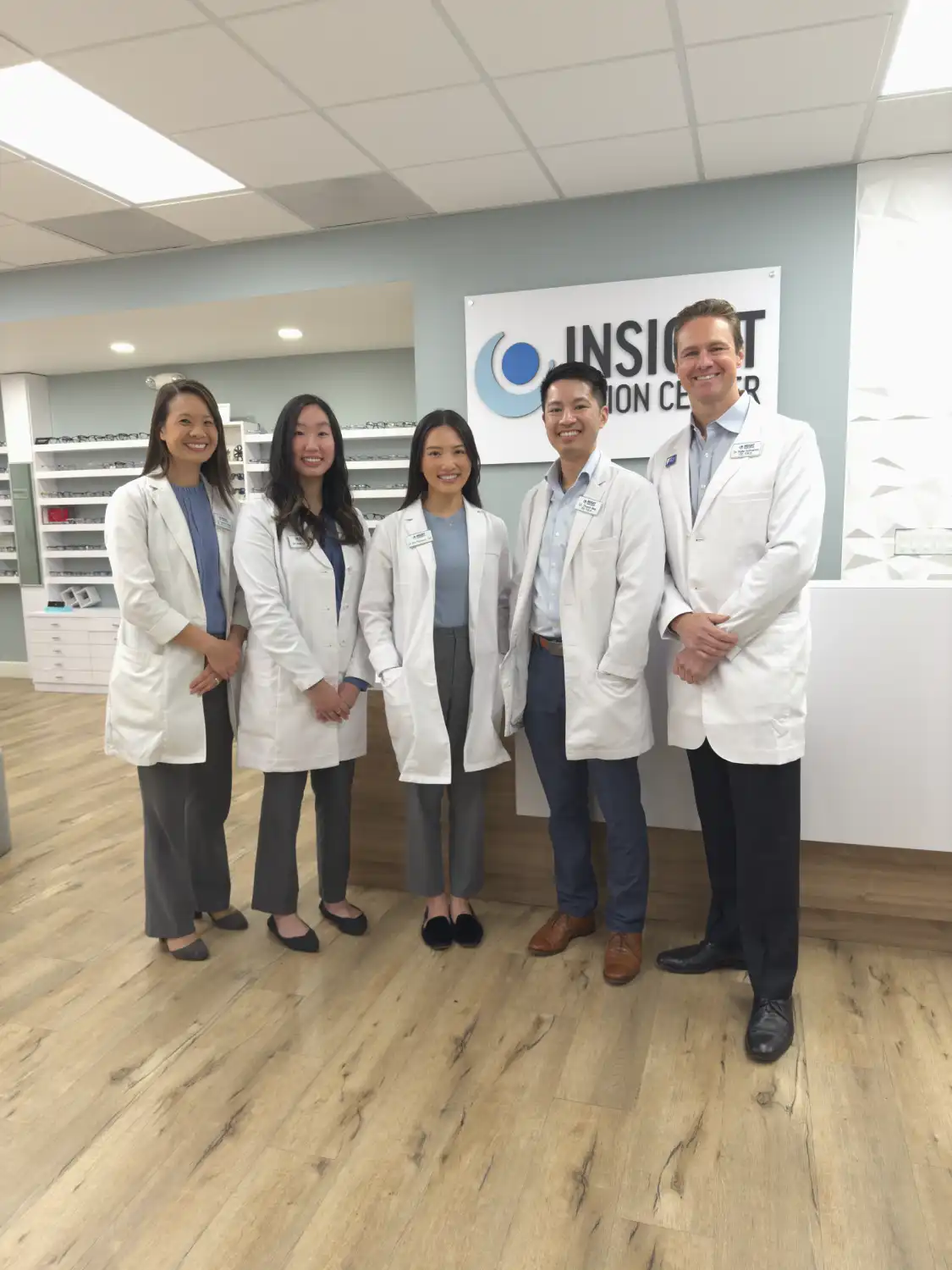
Insight Vision Center Optometry in Costa Mesa is a trusted pediatric vision clinic, with families referred to us from all over Orange County, including nearby cities like Irvine, Huntington Beach, and Santa Ana.
Healthy Vision Habits To Slow Down Progression
Encouraging Outdoor Time
One of the simplest yet most effective practices you can adopt is to encourage more time outdoors. Natural light exposure helps narrow the pupil, reducing peripheral blur and potentially curbing the stimulus for axial growth. This doesn’t require any fancy equipment—just a daily dose of fresh air and sunlight can make a significant difference. Consider making outdoor play a regular part of your child’s routine; whether it’s a walk in the park or playing a game outside, these activities not only benefit overall health but also contribute to improved eye health. Some studies suggest that increased outdoor time can reduce the risk of new myopia onset by nearly 50 percent.

Managing Screen Time and Near Tasks
In today’s digital world, managing screen time is more important than ever. Digital devices are typically held much closer to the face than traditional reading materials, which increases accommodative strain on the eye. Setting limits on screen time and ensuring that near tasks are interspersed with breaks can help ease the burden on your child’s eyes.
Here are some tips to help balance near work with healthy eye habits:
Prioritizing a Healthy Sleep Routine
Sleep plays a crucial role in overall physical development, including that of the eyes. A regular sleep schedule, with proper rest of at least eight hours, can help maintain the natural balance required for healthy eyes. Studies suggest that going to sleep earlier and ensuring adequate sleep may reduce the risk of faster myopic progression. By establishing a consistent bedtime routine and minimizing late-night screen use, you promote not only better sleep quality but also a healthier environment for your child’s eyes to recover from the day’s activities.
Why Should You Consider Myopia Management?
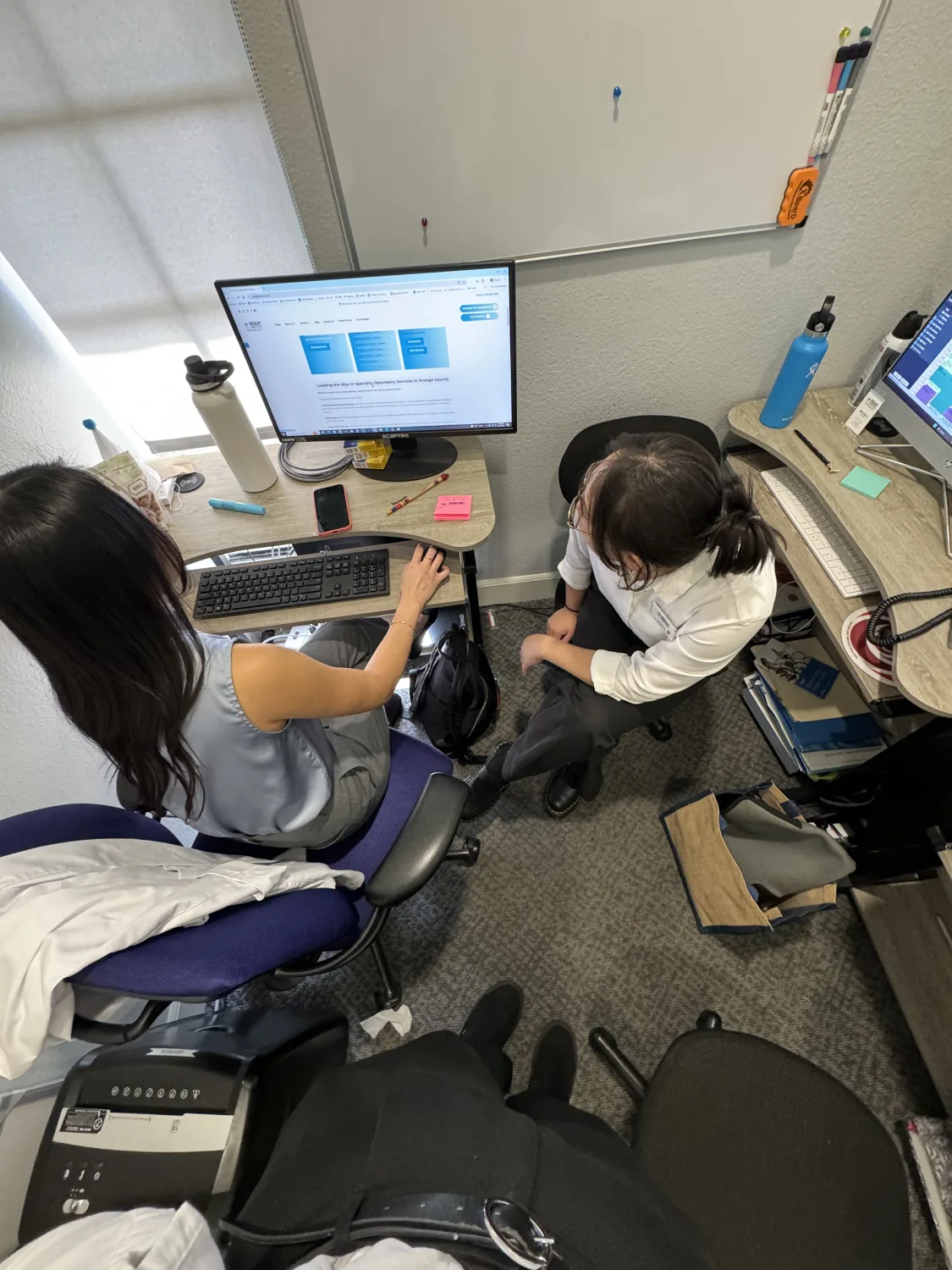
Myopia is more than just needing stronger glasses; it is a condition that evolves with your child’s growth and can potentially lead to serious eye health issues if left unchecked. Our eye doctors emphasize that the key to effective myopia management lies in early diagnosis, regular eye exams, and a personalized plan tailored to your child’s specific lifestyle and rate of progression. From advanced methods like orthokeratology and specialized contact lenses to everyday habits such as increased outdoor time, limiting screen exposure, and maintaining a proper sleep routine, every step contributes to controlling myopia’s progression.
Our goal is to ensure that your child not only sees clearly today but also enjoys the long-term benefits of a well-managed visual condition. We encourage you to schedule an appointment with our eye doctors to discuss your concerns and explore treatment options that fit your family’s needs.
The Ortho-K Experts in Orange County at Insight Vision Center Optometry
Our eye doctors are here to support and guide you through every stage—from the initial fitting and early adjustments to long-term vision maintenance. We warmly invite you to contact our office to discuss personalized strategies and address any questions you may have, ensuring that your child embarks on a clear and confident vision journey.
At Insight Vision Center Optometry, we specialize in providing personalized pediatric eye care to patients across Orange County and those visiting from around the world. Whether you’re in Irvine, Santa Ana, or the surrounding areas, or visiting California, our expert team is here to help your child achieve clear, comfortable vision today and protect their vision into the future. As Orange County’s top-rated pediatric and contact lens specialty practice, we’re committed to delivering the highest level of eye care. Schedule your appointment today and discover why we’re the trusted choice for myopia management.
